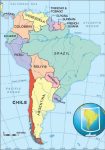
Chile: Introduction
Chile has a little of everything. It is rich in copper, fruits, forests, and fish. It is a country of dramatic scenery and many climates. Cool waters stroke its shore and icy glaciers crown its peaks. Sighs of volcanoes and jolts of earthquakes shake its ribs. Squeezed between the heights of the mountains and the […]
Cuba Looks Ahead
Admirers of Cuba often call this island nation the “Pearl of the Antilles” because of its beautiful natural and cultural landscapes and its potential riches. In the modern world, Cuba should be a center of trade and wealth. The sad reality is that Cuba has never enjoyed true political independence, and it has degenerated into […]
Living in Cuba Today
Havana is Cuba's dominant urban center, with one in four city dwellers living there. This Caribbean metropolis is a primate city, which means that Havana is huge in comparison to the size of the next largest city. Indeed, its metropolitan population of about 3.7 million is several times larger than Santiago de Cuba, Cuba's second […]
Cuba’s Economy
The Castro government transformed the Cuban economy from capitalism to Marxist-Leninist Socialism. The main element of Marxist-Leninist Socialism is the governments “nationalization of all means of production.” This phrase means that the government takes over ownership of all farms, factories, warehouses, railroads, banks, and so on. The government also sets all prices, wages, and salaries […]
Government and Politics
Spain did not create political units on Cuba until 1827. In that year, the Spanish began to govern the island through three loosely defined departments: Occidental (Western), Central (Central), and Oriente (Eastern). The departments were under the command of a captain general who lived in Havana. Each department had several towns. The towns had broad […]
People and Culture
Cuba has the largest population among Caribbean countries, nearly 11.5 million inhabitants. The island's population is highly urbanized, with 76 percent of the people living in cities. With so many people in cities, rural areas are sparsely settled. Like two poles of a magnet, Cuba's population is concentrated on opposite ends of the island. Thirty-eight […]
Cuba Through Time
The Siboney and Guanahatabey Indians are the earliest known inhabitants of Cuba. They arrived there sometime after 3500 b.c. Both groups lived in small temporary settlements. Their dwellings were concentrated near the ocean, because sea life was their main source of food. They gathered clams, mussels, crabs, and lobsters; hunted manatees and sea turtles; and […]
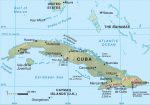
Physical Landscapes
Although we often speak of Cuba as one island, Cuba is actually an archipelago, or group of islands, whose total combined area is 42,803 square miles (110,860 square kilometers). Cuba is the largest island in this archipelago, making up 95 percent of the total land area of the island group. The second largest island, Isla […]

Introducing Cuba
Cuba is an alligator-shaped island and the largest country in the Caribbean Sea. It is located just south of the Tropic of Cancer (23 1/2° north latitude). Florida lies just 90 miles (145 kilometers) to the north and the Yucatan Peninsula of Mexico is to the west. Cuba is one of the Caribbean region's Greater […]
The Dominican Republic Looks Ahead
Many countries, especially those that have what they believe is a glorious history, tend to look to the past more than to the future. Certainly, the Dominican Republic has a long and honored history, but it also has experienced almost-constant social, political, and economic turbulence. During recent years, however, things have begun to change. Democracy […]
Living in the Dominican Republic Today
What is it like to live in the Dominican Republic today? What are the benefits and burdens of being a Dominican resident? In this chapter, we take a look at the Dominicans today in order to better understand the people and their way of life. A CULTURE IN TRANSITION The Dominican culture has been flexible, […]
The Dominican Republic’s Economy
country's economy is the engine that fuels its daily life and determines the well-being of its citizens. Whether it's providing transportation systems or jobs and consumer products or public services, a country's economy has a significant influence on the daily activities of citizens and is the lifeblood of a country. Thus, the health of the […]
Government and Politics
Santo Domingo is the capital and largest city of the Dominican Republic. It has a history that stretches back more than 500 years to the time of brothers Christopher and Bartholomew Columbus. Bartholomew founded the settlement of Nueva Isabella (New Isabella) in 1496, which officially became Santo Domingo in 1498. Santo Domingo is the first […]
People and Culture
Nearly 10 million people call the Dominican Republic home. Most of them are of mixed European and African ancestry. Most Dominicans live in cities, although much of the country's rural landscape is densely packed. In this chapter you will learn about the Dominican people. You will get a glimpse of their demographics (demography is the […]
The Dominican Republic Through Time
Studying the history of a place is an important process. It helps to examine the various pieces and elements that have come together to form the country and culture being examined—in this case the Dominican Republic. What are these pieces? They range from the first peoples who inhabited the island to the outside influences that […]
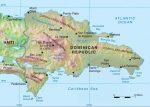
Physical Landscapes
The natural environment forms the foundation upon which all human societies depend for their survival. This is not to say that nature determines the way people live within a particular natural setting. To the contrary, a people's culture, or their way of life, is determined by human ingenuity—what they have learned and are able to […]
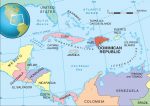
Introduction to the Dominican Republic
For many readers, the Dominican Republic means but one thing—baseball players! It is true that on a per capita basis, no place in the world produces more highly skilled professional baseball players than does this small Caribbean country. But the Dominican Republic offers so much more. In this book, you will learn why the “D.R.” […]
Conclusion
As biologists have learned more about the physiology of plants, the biochemical reactions involved in their growth, maintenance, and reproduction, and in their genetic composition, it has proved necessary to rename the science of botany. The study of plants is no longer a single discipline, but a group of related disciplines that are known collectively […]
Saving the Tropical Forests
Tropical forests cover about 6 percent of the Earth's land area. It is difficult to be precise about the area, but in 2009 tropical forests of all types probably occupied approximately 7 million square miles (18 million km2). As well as rain forests, the Tropics support seasonal forest, dry forest, and mangrove forest, and all […]
National Parks and Nature Reserves
In 1830 the American painter and author George Catlin (1796–1872) set off on a journey up the Mississippi River into Native American lands at the start of a diplomatic mission led by General William Clark (1770–1838). By 1836 Catlin had visited 50 tribes, and in the following two years he visited 18 more on a journey […]
The Advance of Agriculture and the Retreat of Wilderness
People began to cultivate crop plants about 11,500 years ago in Southwest Asia and more recently in every other part of the populated world. At first, the early crops faced severe competition from wild plants, but in time the farmers overcame them, at least partially. It was not only their chosen plant species that the […]
What Is Biodiversity?
There are certain words that everyone uses but that are exceedingly difficult to define precisely. Biodiversity is one such word: The term is a contraction of biological diversity, which seems simple enough. Obviously, it means the variety of living organisms that inhabit our planet. Unfortunately, the apparently simple definition leads to difficulties. If it refers […]
Arthur Tansley and the Plants of Britain
Ecology is now accepted as a scientific discipline in its own right, and there are professional ecologists. This is due in no small measure to the influence of another gifted teacher and writer, the English ecologist Arthur G. Tansley (1871–1955). Tansley always insisted on strict definitions, rigorous use of language, and learning about natural communities […]
Eugen Warming and the Principles of Plant Ecology
The first textbook on plant ecology was published in 1895 in Copenhagen, Denmark, entitled Plantesamfund: Grundtraek af den okologiske Plantegeografi. It was translated into German in 1896 and again in 1902, into Polish in 1900, and into Russian in 1901 and again in 1903. It first appeared in English in 1909, published by the Clarendon […]
Carl Georg Oscar Drude and Plant Formations
Tropical forests extend across a vast area of Central and South America, West and Central Africa, South Asia, and northern Australia. A belt of coniferous forest stretches across northern Canada and Eurasia. The North American prairies, South American pampas, and Eurasian steppe are temperate grasslands. It would be easy to suppose that a visitor might […]
Andreas Schimper and Plant Adaptation to the Environment
Agriculture and commercial forestry have transformed the landscape over almost the whole of Europe. There are few areas of true wilderness remaining, and in an ecological sense the plant communities are not those that would have developed without human interference. Consequently, it is not easy to observe the way plants have adapted naturally to the […]
Gustaf Du Rietz and Communities of Plants
Braun-Blanquet and his colleagues founded one school of phytosociology, but there were others. Professor Teodor Lippmaa (1892–1943) established an Estonian school in 1934 at the University of Tartu, and its first task was to map the plant distribution throughout the country. This was completed in 1955. The plant communities were then grouped into associations on […]
Josias Braun-Blanquet and the Sociology of Plants
Raunkiaer based his system on the way plants have adapted to climate. Other botanists were using a similar approach to classify large units of vegetation, and one of the most influential was the German botanist and plant geographer August Grisebach. Other European plant ecologists developed Grisebach's ideas. This led to the emergence of phytosociology as […]
Christen Raunkiaer and the Way Plants Grow
In 1903 the Danish botanist Christen Raunkiaer proposed a solution to the difficult botanical problem of comparing plant communities with entirely different compositions. Raunkiaer's idea was to categorize plants by the position of their perennating buds—the plant structure with which a plant survives periods of adverse conditions. Raunkiaer believed that flowering plants first appeared in […]
Robert Brown, the Cell Nucleus, and the Study of Pollen
Charles Darwin's theory of evolution by natural selection was first presented in the form of a paper read at a meeting of the Linnean Society in London on July 1, 1858. The meeting had been arranged hastily, following Darwin's receipt on June 18 of a paper by Alfred Russel Wallace (1823–1913) setting out an almost identical […]
Matthias Schleiden, Theodor Schwann, and Cell Theory
It was Robert Hooke in the 17th century who first observed cells and gave them that name, but the German botanist Matthias Schleiden (1804–81) was the first scientist to appreciate their importance. All living organisms either consist of a single cell or are made up of cells, and organisms grow and reproduce by the division […]
Erasmus Darwin and The Botanic Garden
The Lunar Society boasted several members of outstanding intellect, who quite cheerfully referred to themselves as lunaticks. Joseph Priestley was one, and another was Erasmus, the grandfather of Charles Darwin. Erasmus Darwin (1731–1802) believed that in the natural world species were constantly developing as they struggled to overcome the constraints imposed by their environment. He […]
Phlogiston
In 1667 the German chemist Johann Joachim Becher (1635–1682) published a book called Physica Subterranea (Physics below ground), in which he revised the traditional view of the classical elements. Becher replaced the elements fire and earth with three alternative forms of earth to which he gave Latin names: terra lapidea, or “stony earth,” which was […]
Joseph Priestley and “Dephlogisticated Air”
In 1772 William Petty, the second earl of Shelburne (1737–1805), invited Joseph Priestley (1733–1804), with his wife Mary and their three children, to live on his estate near Calne, Wiltshire, where Priestley would work as Petty's librarian and tutor to his children. The Priestleys moved to the Shelburne estate the following year. That is where […]

Stephen Hales, the Movement of Sap, and Transpiration
On the surfaces of leaves there are small pores that open and close in response to the movements of two guard cells, one on either side of each pore. The pores are called stomata (singular stoma), and they are the openings through which the plant exchanges gases. Carbon dioxide enters the plant and is used […]
Robert Hooke and the Cell
In 1665 the English physicist, instrument maker, and inventor Robert Hooke (1635–1703) published a book called Micrographia describing his researches using a microscope and illustrated by his own excellent and detailed drawings. Hooke's microscope has survived and is shown in the following illustration. It is now housed at the National Museum of Health and Medicine […]
Marcello Malpighi and the Microscopic Study of Plants
Nehemiah Grew moved from Coventry to London partly to gain access to the microscopes owned by the Royal Society. Scientists recognized the value of these instruments, and Grew made extensive use of them. It was the Italian physician Marcello Malpighi (1628–94), however, who really pioneered the use of the microscope in the study of anatomy. […]
Nehemiah Grew, Plant Reproduction, and Comparative Anatomy
Scientists who aim to reconstruct past climates and environments make use of pollen—the mass of grains produced within the anther of a flower that carry the sperm. Every pollen grain has a tough protective coat that can survive in the soil for many years, and scientists are able to retrieve stored pollen grains from the soil […]

Nikolai Vavilov and the Origin of Cultivated Plants
When early farmers first began to select the plants that they wished to grow, they chose individuals with certain characteristics. In the case of cereals, for example, they selected plants with a tough rachis and a large store of endosperm. In selecting for certain traits, farmers gradually altered the genetic constitution of their crop plants, and […]
Gote Turesson and Plant Ecotypes
Natural selection acts on differences that exist among the members of a species, and the concept of such variation is central to Darwin's evolutionary theory. The fact of variation among individuals creates classification problems, however, as taxonomists must decide whether the visible differences between two plants or animals are sufficient to justify classifying them as […]
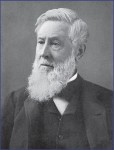
Asa Gray and the Discontinuous Distribution of Plants
In 1851 during one of his trips to Europe, Asa Gray (1810–88) visited Kew Gardens, where Joseph Dalton Hooker (1817–1911) introduced him to Charles Darwin. Hooker was director at Kew, and since 1842 Gray had been professor of natural history at Harvard University, where he devoted himself wholly to botany. He was the leading American […]
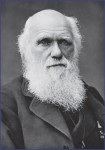
Charles Darwin and Evolution by Means of Natural Selection
At his home, Down House, in Kent, Charles Darwin (1809–82) had a large garden that he loved and greenhouses in which he performed experiments. Although his evolutionary theory is most often discussed in its relation to animals, Darwin was every bit as interested in the evolution of plants. He used the way breeders modify animals […]
Adolphe-Theodore Brongniart, Father of Paleobotany
In 1822 a 21-year-old French botanist published a paper on the distribution and classification of fossil plants. This established the career path the young man would follow and that culminated with his most important work. This began with Prodrome d'une Histoire des Vegetaux Fossiles (Introduction to a history of fossil plants), published in 1828, followed by […]
How Rubber Moved to Asia
Natural rubber is made from the latex exuded by a tree, Hevea brasiliensis. Latex is a milky fluid produced by some herbs and trees that may carry nutrients and may also help the plant to heal wounds. The rubber tree grows naturally in tropical South America, where people were using rubber long before the arrival […]
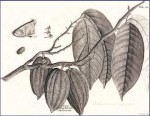
Sir Hans Sloane, Milk Chocolate, and the British Museum
Cocoa is the most popular alternative drink to coffee and tea. It is made from the berries of a small tree (Theobroma cacao) that is native to tropical America and the islands of the Caribbean including Jamaica, which is the source of the first cocoa to reach Europe in 1698. The berries develop inside pods, […]
How Brazil Acquired Its Name
In the 15th and 16th centuries, wealthy Europeans dressed in rich fabrics dyed with bright colors, while ordinary folk were clad in dull grays and browns. Red was especially popular, not least because the dye, derived from the wood of the sappanwood tree (Caesalpinia sappan), was so expensive that sporting a red coat or gown […]
Coffee, and Kaldi’s Goats
Coffee originated in Ethiopia. That is where the plants (Coffea arabica and other species) grow naturally, and it is where they were first cultivated. Ethiopians were the first people to drink coffee. According to legend, it all began with a goatherd called Kaldi who lived in the ninth century c.e., although it was not Kaldi […]
Tea, and How Bodhidharma Stayed Awake
The founder of Zen Buddhism was a sage from southern India whose Sanskrit name was Bodhidharma, which means “teachings of the Buddha.” In China he is called Damo, and in Japan he is Daruma. The son of a Tamil king, Bodhidharma lived in the fifth or sixth century c.e. and became a Buddhist monk. He […]
Captain Bligh, HMS Bounty, and the Breadfruit Trees
In the late 18th century Sir Joseph Banks (1743–1820) was president of the Royal Society. For a time Banks had been the unofficial director of the Royal Botanic Gardens at Kew. He wielded considerable influence in political and scientific circles. Britain was establishing colonies in many parts of the Tropics, and there was much interest […]
The Story of Cotton
No one knows who were the first people to wear clothes made from cotton or where they lived. Archaeologists have found traces of cotton fabrics dated at about 2300 b.c.e. in the ruins of Mohenjo-Daro. At that time the two cities of Mohenjo-Daro and Harappa, in the Indus Valley along what is now the border […]
The Story of Corn
Corn, also called maize (Zea mays mays), is a crop plant that originated in America. It is one of the approximately 10,000 members of the grass family (Poaceae), but it differs from the other cereal grasses in the extent to which the process of domestication altered it. These differences are so great that at one […]
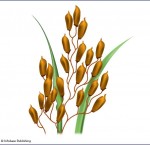
The Story of Rice
Rice (Oryza sativa) is also a member of the grass family (Poaceae). Today it is the staple food for about half the world's population, with two major varieties, O. sativa indica and O. sativa japonica. Its many tiny flowers, known collectively as an inflorescence, have a complex structure with many branches. This is called a […]
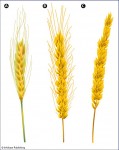
The Story of Wheat
Wheat is a type of grass that grows wild in the mountains of southeastern Turkey, and it was there, about 11,000 or possibly as much as 12,500 years ago, that people began to cultivate it. They had been collecting wheat grain from time immemorial, preferring einkorn (Triticum monococcum) and emmer (T. turgidum) wheats, but they […]
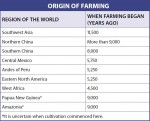
The Origins of Agriculture
Life in a modern city or even a large town would be impossible were it not for the farmers who grow crops and the distribution and retailing systems that bring the food to the stores. It is agriculture that makes urban life possible, but it makes no sense to suggest that farming began in order […]
Carl Skottsberg and the Plants of Southern South America
At Punta Arenas, in southern Chile, there is a botanical garden named in honor of one of the world's greatest botanical explorers. The Jardin Botanico “Carl Skottsberg” was founded in 1970, just a few years after the death of the Swedish botanist Carl Skottsberg (1880–1963). Early in his career, Skottsberg took part in a Swedish […]
August Grisebach and Floral Provinces
In 1872 August Grisebach (1814–79), professor of botany at the University of Gottingen, Germany, published a two-volume work that greatly advanced the study of phytogeography. Its full title was Die Vegetation der Erde nach ihrer klimatischen Anordnung: Ein Abriss der vergleichenden Geographie der Pflanzen (The vegetation of the Earth according to its climatic distribution: A […]
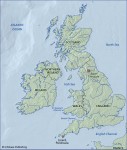
Edward Forbes and the Significance of Ice Ages
The River Tees rises in the northern Pennines—a chain of hills that runs in a north-south direction down the center of northern England—flowing about 70 miles (113 km) to the North Sea. In the upper part of the valley, called Upper Teesdale, there is an unusual community of plants. The plants are not rare, but […]
Alphonse de Candolle and Why Plants Grow Where They Do
Augustin de Candolle had traveled in Brazil, Indonesia, and northern China, and his observations convinced him of the importance of soil type in determining the way plants are distributed. In 1820 he wrote Essai elementaire de geographie botanique (Elementary essay on botanical geography), in which he elaborated on an idea that Linnaeus had proposed earlier. […]
Franz Meyen and Vegetation Regions
Humboldt was generous in his support for young researchers and helped many at the start of their careers, but if he can be said to have had a favorite, that person was Franz Meyen (1804–40). When Humboldt first met him, Meyen was working as a physician. Humboldt secured for him the post of professor of […]
Karl Ludwig von Willdenow and the Start of Scientific Plant Geography
In 1788 when he was 19 years old and about to enroll at the University of Gottingen, Alexander von Humboldt met Karl von Willdenow (1765–1812), a 23-year-old medical student. Humboldt already had a keen interest in natural history and his meeting with Willdenow strongly encouraged it. Willdenow was learning medical botany, and his detailed studies […]
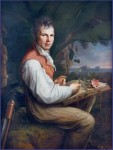
Alexander von Humboldt and the Plants of South America
Alexander von Humboldt's exploration of South America, accompanied by the French botanist Aime Bonpland (1773–1858), did much to establish biogeography as a distinct scientific discipline, but Humboldt was much more than a geographer. In his most famous work, Kosmos, published in five volumes between 1845 and 1862, he wrote that “I always wanted . . […]
Ernest Wilson, Collecting in China and Japan
In April 1902 Ernest “Chinese” Wilson (1876–1930) arrived back in England from his first plant-collecting expedition. He brought with him 35 Wardian cases of plants, seeds of 305 plant species, and herbarium specimens of 906 species. Between 1899 and 1919, Wilson undertook five expeditions to China and three to other parts of the world, from […]
The Wardian Case
Until the middle of the 19th century, plant hunters traveling in distant lands were able to send samples home only by preserving them first. Insects had to be killed and pinned to cards, and plants pressed and dried to make herbarium specimens. It was possible to send plant seeds on journeys lasting many weeks or […]
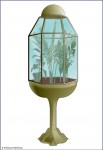
Robert Fortune, Collecting in Northern China
The Chusan palm (Trachycarpus fortunei) is one of the very few palm trees that can survive in the cool, wet Scottish climate. For that reason, it is a fairly common sight in Scotland, especially in coastal resorts attempting to offer a taste of the exotic to city vacationers. The species was introduced to Scotland by […]
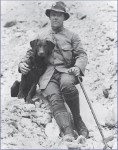
George Forrest, Collecting in Yunnan
George Forrest (1873–1932) was one of the most successful plant hunters of the early 20th century. He undertook seven major expeditions to western China and returned to the Royal Botanic Garden Edinburgh more than 30,000 specimens of 10,000 plant species, of which 1,200 were new to science. Forrest was also one of the most adventurous […]
Reginald Farrer and Alpine Plants
Rock gardens and the alpine plants that grow in them have been popular since the early years of the 20th century. They became fashionable following the publication in 1907 of My Rock Garden, a book that remained in print until about 1950. It was followed a year later by Alpines and Bog Plants. Both books were […]

David Douglas in North America and Hawaii
The Douglas fir (Pseudotsuga menziesii) is a magnificent tree that occurs naturally in western North America from British Columbia southward to northern Mexico. It can grow up to 330 feet (100 m) tall and is one of North America's most valuable sources of timber. The tree can occur in dense stands in forests, but it […]

Rhododendrons, Primulas, and Frank Kingdon-Ward
Rhododendrons have long been popular with gardeners. There are approximately 850 species in the genus Rhododendron. At least 26 species occur naturally in North America. The following illustration shows one of these, Catawba rhododendron (R. catawbiense). In China there are about 650 species and large numbers grow in the mountains of Nepal, Bhutan, and Sikkim. […]
Adolf Engler and the Vegetation of the World
In 1924 the German botanist Adolf Engler (1844–1930) published Syllabus der Pflanzenfamilien (Summary of plant families). In this work, Engler set out his own system of plant taxonomy. Many herbaria, field guides, and floras still use Engler's classification, and the 12th edition of this two-volume work, edited by H. Melchior and E. Werdermann, was published […]
Augustin de Candolle and Natural Classification
Linnaeus developed the approach to classification that Tournefort had used, but he did not depart from its principles. Under the Linnaean system, plants were grouped together on the basis of similarities in their flowers—the number and arrangement of stamens. His system was easy to learn, so students liked it, but it was unnatural, and in […]
How Plants Are Classified
Most plants, though not all, have a name in the language of every country in which they occur naturally. In many cases they also have several local names. In addition, every plant known to science has an “official” or scientific name. This name is in Latin, by convention it is written in italic characters, and […]
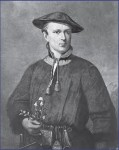
Carolus Linnaeus and the Binomial System
A common plant is likely to have many names, but to avoid confusion it will have only one scientific name. The scientific name will be in Latin and it will have two parts, the first being the name of the genus and the second of the species. This use of two names to identify a […]
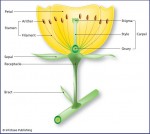
Joseph Pitton de Tournefort and the Grouping of Plants
Its flower is the most obvious feature of most flowering plants. Many flowers have brightly colored petals. These attract pollinating animals. Plants such as grasses that are pollinated by wind have no need of petals, so their flowers are usually smaller and drab in color, but they are nevertheless prominent and clearly visible. However it […]

Jose Mutis and the Bogota Botanical Garden
The Jardin Botanico Jose Celestino Mutis in Bogota, Colombia, is a research and scientific center and the country's largest botanic garden. It occupies 20 acres (8 ha) and specializes in Andean species, with greenhouses containing plants from every region of the country, including 5,000 species of orchids and the world's largest example of the giant […]
Jean-Baptiste Lamarck and the Royal Garden, Paris
In 1778 a former Paris bank clerk published Flore Francaise (French flora) in three volumes. The work was an immediate success and, with the support and help of France's leading natural scientist, Georges- Louis Leclerc, comte de Buffon (1707–88), its author was appointed an assistant botanist at the Jardin du Roi, the royal botanical garden […]

Sir William Hooker, the First Official Director
Both Joseph Banks and George III died in 1820, and in the years following their deaths interest in the gardens waned and they came close to being abandoned. The new king, George IV (1762–1830), had little interest in them. The decline was arrested with the arrival of the first director, Sir William Hooker (1785–1865), in […]
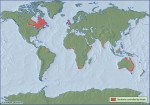
Sir Joseph Banks, Unofficial Director of Kew
Princess Augusta died in 1772. Her son, George III, inherited both Kew Gardens and Richmond Gardens, and in 1802 he joined them together. George III was keenly interested in agriculture and agricultural research—an enthusiasm that earned him the nickname “Farmer George”—and he turned part of the combined gardens over to raising sheep. During his reign […]

Sir Henry Capel, Princess Augusta, and the Royal Botanic Gardens at Kew
Britain's principal botanical garden occupies more than 300 acres (121 ha) beside the River Thames at Kew in southwest London. It became a botanical garden in 1752, so what is now the Royal Botanic Gardens, Kew, is of much more recent origin than most of Europe's botanical gardens and it is not the oldest botanical garden […]
Tulipomania
The tulip originated in Turkey. It was introduced into Europe in the 16th century and became highly popular in the United Provinces (now the Netherlands). Growers discovered they could produce a wide range of varieties with many different colors, some a single but vivid red or yellow, some white, and some with more than one […]
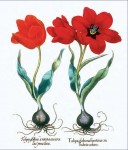
Carolus Clusius, the Leiden Botanical Garden, and the Tulip
Within a few decades, botanical gardens were opening elsewhere in Europe. The University of Leipzig, Germany, began work on its garden even earlier, in about 1542, but it opened later than the Italian ones. In about 1567 the University of Bologna converted its physic garden into a botanical garden. University administrators were recognizing that a […]
Pisa, Padua, and Florence, the First Botanical Gardens
In 1544, the botanist Luca Ghini established Europe's first botanical garden in Pisa, Italy. Ghini was acting on the orders of Cosimo I de'Medici, the grand duke of Tuscany, who wished the garden to stock simplicia—plants with medicinal properties. The garden was linked to the University of Pisa, and is still: Its official title is […]
The Rise of the Herbarium
There was nothing novel in the practice of pressing and drying plants, especially flowers. The oldest example of a plant preserved in this way consists of the twigs and leaves of an olive tree (Olea europaea) made from a bundle of olive twigs bound together by cords made from palm leaves that was discovered in […]

Luca Ghini and How to Press Flowers
Gardeners were often avid plant collectors. Highly competitive, they sought to impress their rivals by their displays of the latest fashions in plantings and of plants that had only recently arrived in their corner of the world. The landscaped gardens with which 18th-century landowners delighted their houseguests were often stocked with exotic trees, and the […]
Lancelot “Capability” Brown
During the 18th century there was a reaction against the excessively formal gardens to be found in the grounds of most European palaces and great houses. A more romantic approach became fashionable, and landowners sought to surround their homes with parkland that appeared natural. Rectangular beds and straight paths gave way to curved lines. A […]

Formal Gardens, Restoring Order to a Chaotic World
The rising interest in plants was accompanied by a wish to cultivate them, and private gardens became increasingly popular from early in the 16th century. Borrowing the basic design of the medieval monastic garden, these gardens were usually walled and were tranquil places where people could relax, enjoying the shapes, colors, and perfumes of the […]
Identifying Plants: The Herbal Becomes the Flora
In 1622 Caspar Bauhin published Catalogus plantarum circa Basileam sponte nascentium (Catalog of plants occurring naturally around Basel). This slim book was a list of the plants growing around Basel. It contained no illustrations, but it listed all the synonyms for the plants it described and details of where each plant might be found, and alternate […]

The Doctrine of Signatures
People are very good at recognizing patterns, even where no pattern exists, and pattern recognition played an important part in early herbal medicine. When people rummaged through the meadows and along the hedgerows for plants that might heal their ailments, they saw similarities between plant forms and the part of the body that was sick. […]
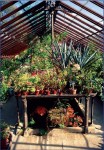
The Apothecaries’ Garden at Chelsea
In every major city there are annual events that mark the passing of the seasons. London is no exception, and one of its annual festivals attracts gardeners and garden enthusiasts from all over Britain. The Chelsea Flower Show is a celebration of garden design and plant breeding. The show takes place in a garden that […]
Monastic Gardens
In the Middle Ages European monasteries and convents were centers of learning, and the monks and nuns also had a duty to care for the lay community outside the monastery walls. They provided shelter and hospitality for pilgrims and other travelers, schools for local children, and they cared for the sick. Most monasteries and convents […]
The Bauhin Family
Herbals grew steadily longer in the course of the 16th century, and as they grew so did the number of omissions and inaccuracies they contained and repeated. There was only one way the situation could be remedied: Someone had to go through as many of the publications as possible looking for duplications, synonyms, and obvious […]
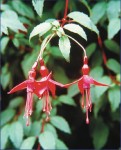
Leonhard Fuchs, Fuchsia, and the First Botanical Glossary
It is the custom for botanists to honor distinguished members of their profession by naming plants for them. The fuchsia is a popular ornamental shrub, grown for its flowers and as a hedging plant. The French botanist Charles Plumier (1646–1704) was the first European to discover it. In 1696–97 Plumier found it growing wild on […]
Nicholas Culpeper and His Herbal Best Seller
In 1653 Nicholas Culpeper (1616–54) published The Complete Herbal. It was the last of his works to be published in his lifetime, and he wrote the following explanation of how he felt obliged to offer an alternative to what he regarded as the unnatural and harmful treatments of his medical rivals. This not being pleasing […]
John Gerard and His Herbal
In the 16th and 17th centuries, barbers performed surgery as well as cutting hair and shaving men. The red-and-white barber's pole is believed to represent blood and bandages associated with their merged calling, and in Britain surgeons are still addressed as “Mr.” rather than “Dr.” This arrangement began in 1163, when a papal decree forbade […]
Rembert Dodoens and the First Flemish Herbal
In 1578 a printer called Gerard Dewes, living at the Sign of the Swan in St. Paul's Churchyard, London, published a new herbal for which he claimed much. He advertised it as (with the original 16th-century spelling): A nievve herball, or, Historie of plantes: wherein is contayned the vvhole discourse and perfect description of all […]
Conrad Gessner, the German Pliny
A polymath is a scholar who is learned in a wide range of subjects, a kind of all-purpose expert. Conrad Gessner (1516–65) of Zurich, Switzerland, was one of the most remarkable polymaths the world has ever known. Some historians have described him as a one-man Royal Society, but during his own lifetime he was best […]
Konrad von Megenberg and His Illustrated Herbal
A modern field guide to plants or a book about the plants found in a particular region would sell rather few copies if it lacked illustrations. Modern photographic and printing technologies make it relatively simple to include colored illustrations, but this is a recent advance. Before the invention of photography and offset printing, an illustration […]
Albert the Great and the Structure of Plants
Herbalists need to be able to identify plants, and if they are to cultivate them they need to understand the environmental conditions their herbs require. They require the skills of the horticulturist to produce the raw materials from which their pharmaceutical skills allow them to concoct remedies. These are important skills, but they are not […]
The Aztec Herbal
Plants grow almost everywhere, many have therapeutic properties, and people of every culture treat their ailments with the herbal remedies they find around them. The peoples of the Americas are no exception, and when Europeans first arrived in Central America they found that the Aztec people were highly skilled practitioners of herbal medicine. The Spanish […]
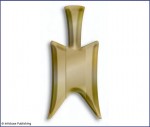
Shennong, the Divine Farmer
Traditional Chinese medicine is based largely on herbs, and it has been practiced for a very long time—about 5,000 years. Chinese legend attributes its origin to an emperor who is thought to have lived from about 2737 b.c.e. to about 2697 b.c.e., probably not far from the city of Xian in what is now Shaanxi […]
John Ray and His Encyclopedia of Plant Life
In 1686, 1688, and 1704, the English naturalist John Ray (1627–1705) published the three volumes of Historia generalis plantarum (A general account of plants); each volume had approximately 1,000 pages. Ray was 59 and this was the culmination of his life's work, in which he attempted to classify plants. The book described more than 18,600 […]